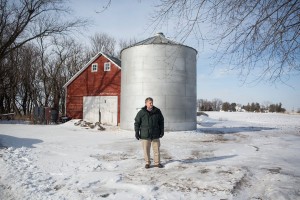E.P.A.’s Proposed Rules on Water Worry Farmers
< < Go Back
Water rarely flows in one of the streambeds — it really seems to be little more than a small ditch — that Dean Lemke points out to a visitor on his 800-acre farm in Dows, Iowa.
“I wouldn’t even call it a stream,” he said. “There is only water flow in it when it rains.”
Mr. Lemke is a former Iowa state government official who supervised water-quality programs. He is also a fifth-generation farmer who grows corn and soybeans on his acreage, about 75 miles north of Des Moines, and he has never worried that the government would be concerned about that small ditch.
But that may soon change.
The Environmental Protection Agency is set to issue regulations that farmers like Mr. Lemke say may require them to get permits for work for which they have long been exempt. The E.P.A. says the new rules are needed to clarify which bodies of water it must oversee under the federal Clean Water Act, an issue of jurisdiction that the agency says has been muddled by recent court rulings. Opponents say the rules are a power grab that could stifle economic growth and intrude on property owners’ rights.
There is no timetable for when the rules will be released. But if the agency expands its jurisdiction over streams like the one on Mr. Lemke’s farm, he and other farmers say, the move could prove costly by requiring farmers to pay fees for environmental assessments and to get permits just to till the soil near gullies, ditches or dry streambeds where water only flows when it rains. A permit is required for any activity, like farming or construction, that creates a discharge into a body of water covered under the Clean Water Act or affects the health of it, like filling in a wetland or blocking a stream.
The proposed regulations have also raised concerns among industries beyond agriculture, and objections have been filed by several groups.
To coordinate the opposition efforts, those groups joined forces nearly three years ago with several agriculture trade organizations, like the American Farm Bureau Federation, to create the Waters Advocacy Coalition to lobby against increased environmental regulation.
In a letter last month to the White House and members of Congress, the coalition said the agency’s decision to move forward on the new rules failed to comply with regulatory requirements and relied on a flawed economic analysis concerning its effect on industry. The coalition also said the scientific report the agency and the Army Corps of Engineers relied on to justify the new rules had not been reviewed by other scientists.
Conservation groups, which have pushed for the regulations, say farmers’ concerns are overblown.
Jan Goldman-Carter, a lawyer who works with the National Wildlife Federation on water issues, said the proposals outlined regulatory exemptions that have been in place for decades for plowing, planting, harvesting and maintaining drainage ditches. She said a copy of the draft regulations that was leaked last year clearly shows that to be the case.
“The draft guidance is clear that irrigation ditches, drainage ponds and even groundwater are not considered waters of the U.S. Nor are gullies, rills, swales and other erosional features,” she said. “This has been explained over and over again.” Industry claims that ditches or groundwater might be covered under the new regulations are “just wrong,” she said.
Mrs. Goldman-Carter said the draft copy showed that the regulations would increase the E.P.A.’s jurisdiction over streams by about 3 percent. That is hardly a power grab, she said.
More From The New York Times:




